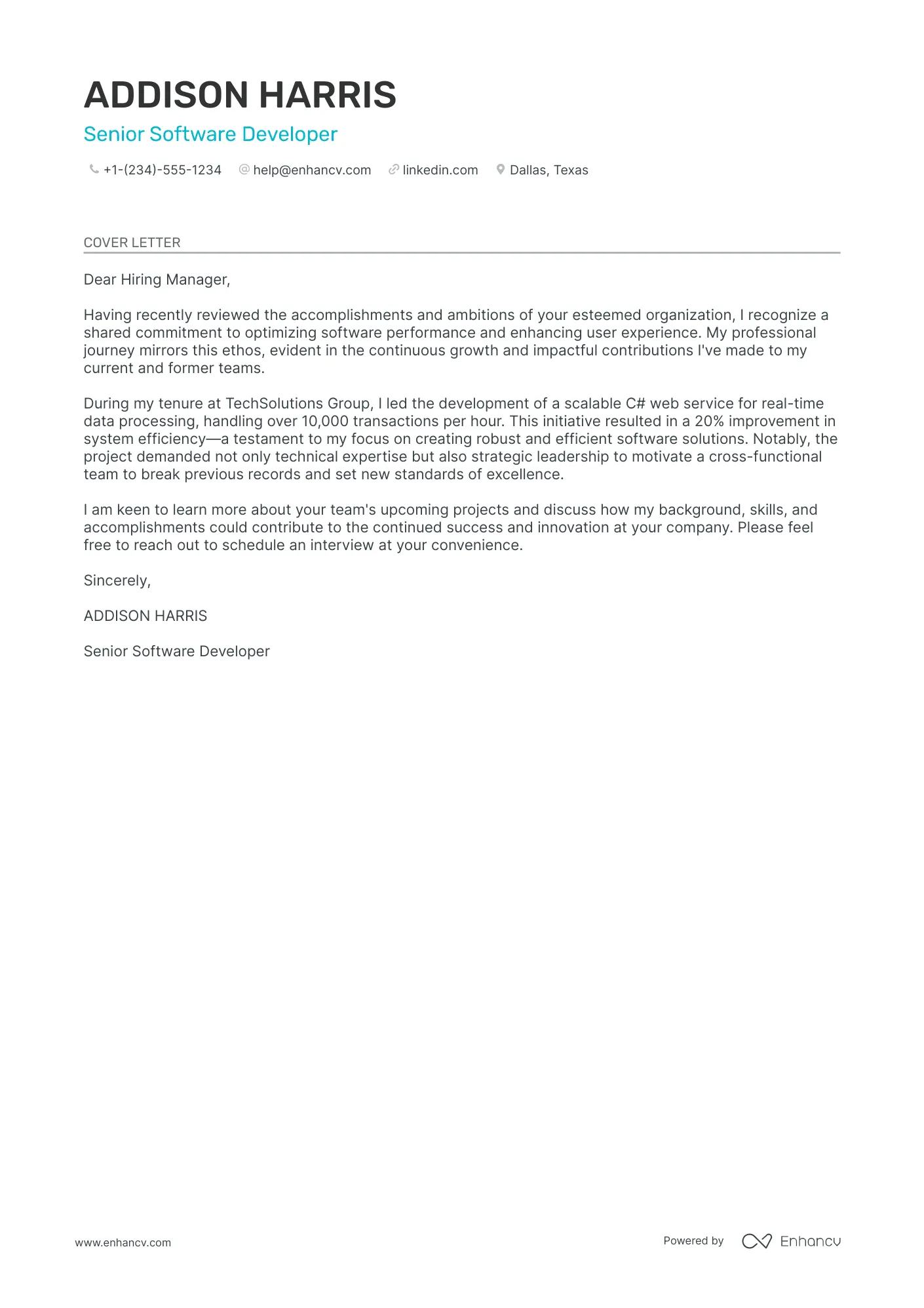Crafting a Compelling Web Developer Cover Letter
A well-crafted cover letter is your first opportunity to impress a potential employer. It’s more than just a formality; it’s a chance to showcase your personality, passion, and the unique value you bring to the table. Unlike your resume, which provides a snapshot of your skills and experience, your cover letter allows you to tell a story, explain your career goals, and demonstrate why you’re the perfect fit for the role. Mastering the art of the cover letter is crucial for any web developer aiming to stand out in a competitive job market. This guide will provide a comprehensive cover letter sample for web developer applications, along with tips and tricks to make your application shine.
Understanding the Purpose of a Cover Letter
The primary purpose of a web developer cover letter is to complement your resume by providing context and highlighting the most relevant aspects of your experience. It’s your chance to go beyond a simple list of skills and projects, and instead, paint a picture of how you’ve applied those skills in real-world scenarios. A compelling cover letter grabs the reader’s attention, demonstrates your enthusiasm for the specific job, and showcases your understanding of the company’s needs. It should explain why you are particularly interested in the role and the company, establishing a personal connection that sets you apart from other applicants. It is also an opportunity to elaborate on your career aspirations and how the position aligns with your long-term goals.
Highlighting Your Key Skills
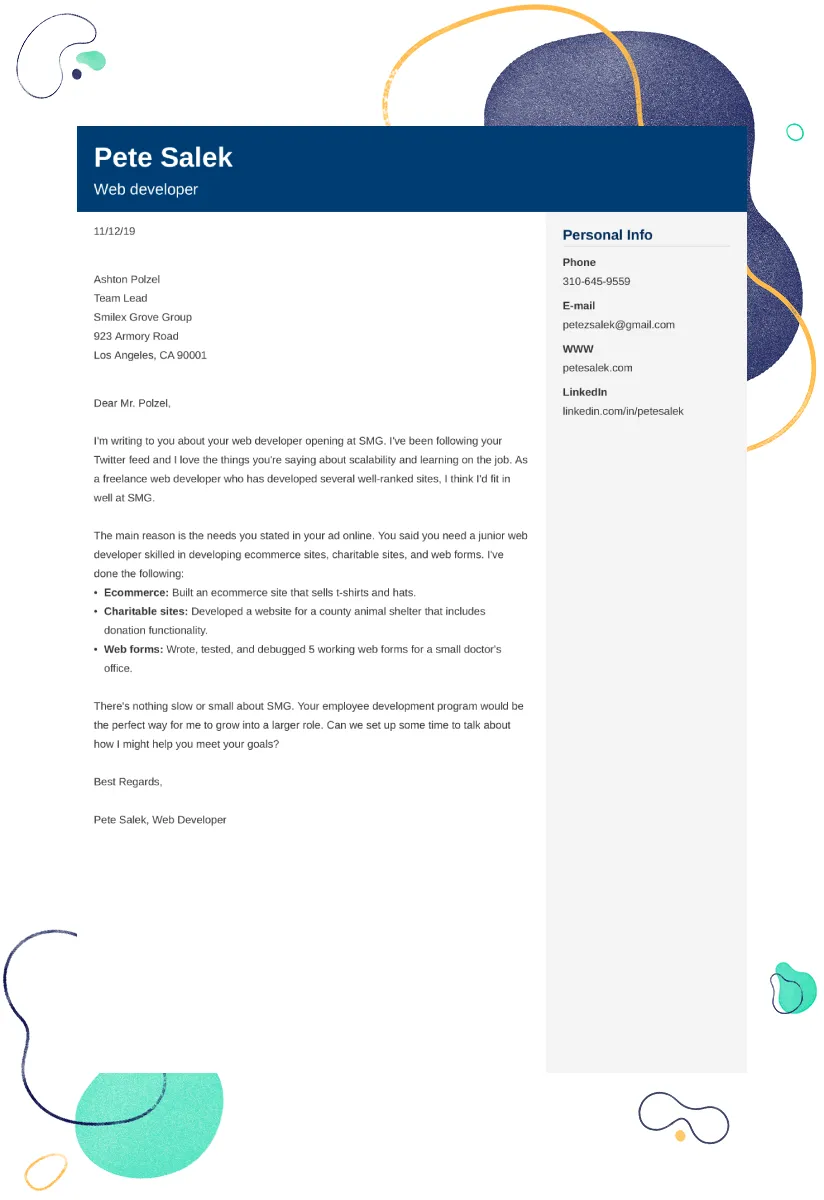
Your cover letter should explicitly mention your key skills, aligning them with the job description’s requirements. This helps the hiring manager quickly assess your suitability for the role. Focus on the most relevant skills and provide concise examples of how you have used them in previous projects or roles. This shows you can walk the walk and that your skills are not only written but practiced.
Technical Proficiency
Web developers need a broad range of technical skills. Showcase your expertise in front-end and back-end technologies. Mention specific frameworks, libraries, and tools you are proficient in. Quantify your experience with each technology by mentioning the number of projects, years of experience, or the scale of the projects. Be specific and avoid generic statements.
Programming Languages
List the programming languages you are proficient in, such as JavaScript, Python, Java, PHP, etc. Specify your level of expertise (e.g., proficient, intermediate, beginner) for each language. Highlight any certifications or training related to these languages. Mention any experience with version control systems like Git. Show your ability to work in the languages needed for the job.
Front-End Development
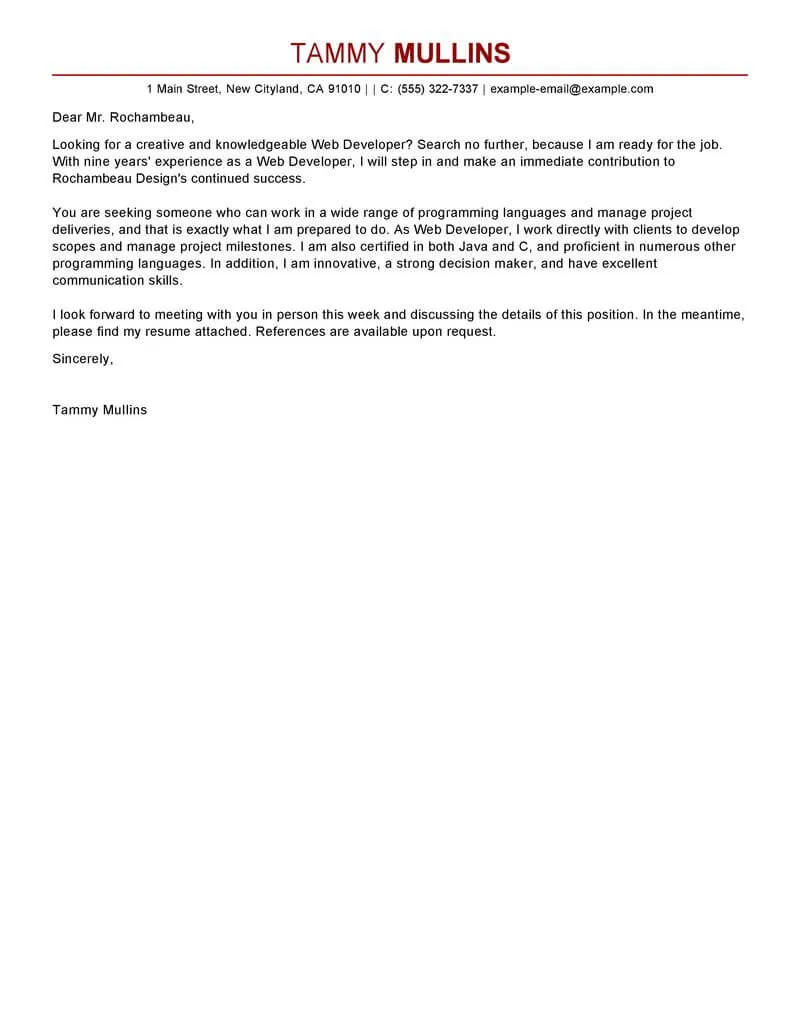
If the role involves front-end development, highlight your skills in HTML, CSS, and JavaScript. Mention your experience with front-end frameworks like React, Angular, or Vue.js. Describe your ability to create responsive designs and ensure cross-browser compatibility. Include details about your experience with UI/UX best practices and any design tools you are familiar with. Show how you can build accessible and user-friendly interfaces.
Back-End Development
For back-end roles, showcase your expertise in server-side programming languages like Node.js, Python (with frameworks like Django or Flask), or Ruby on Rails. Mention your experience with databases (SQL or NoSQL), APIs, and server management. Highlight your ability to write efficient and scalable code. If the job demands it, show your knowledge of cloud platforms like AWS, Azure, or Google Cloud Platform.
Soft Skills
Soft skills are equally important. Mention your ability to work in a team, communicate effectively, and manage your time. Provide examples of how you’ve used these skills in previous projects or roles. Consider adding skills such as time management, problem-solving, and adaptability. Show them off as well.
Communication and Teamwork
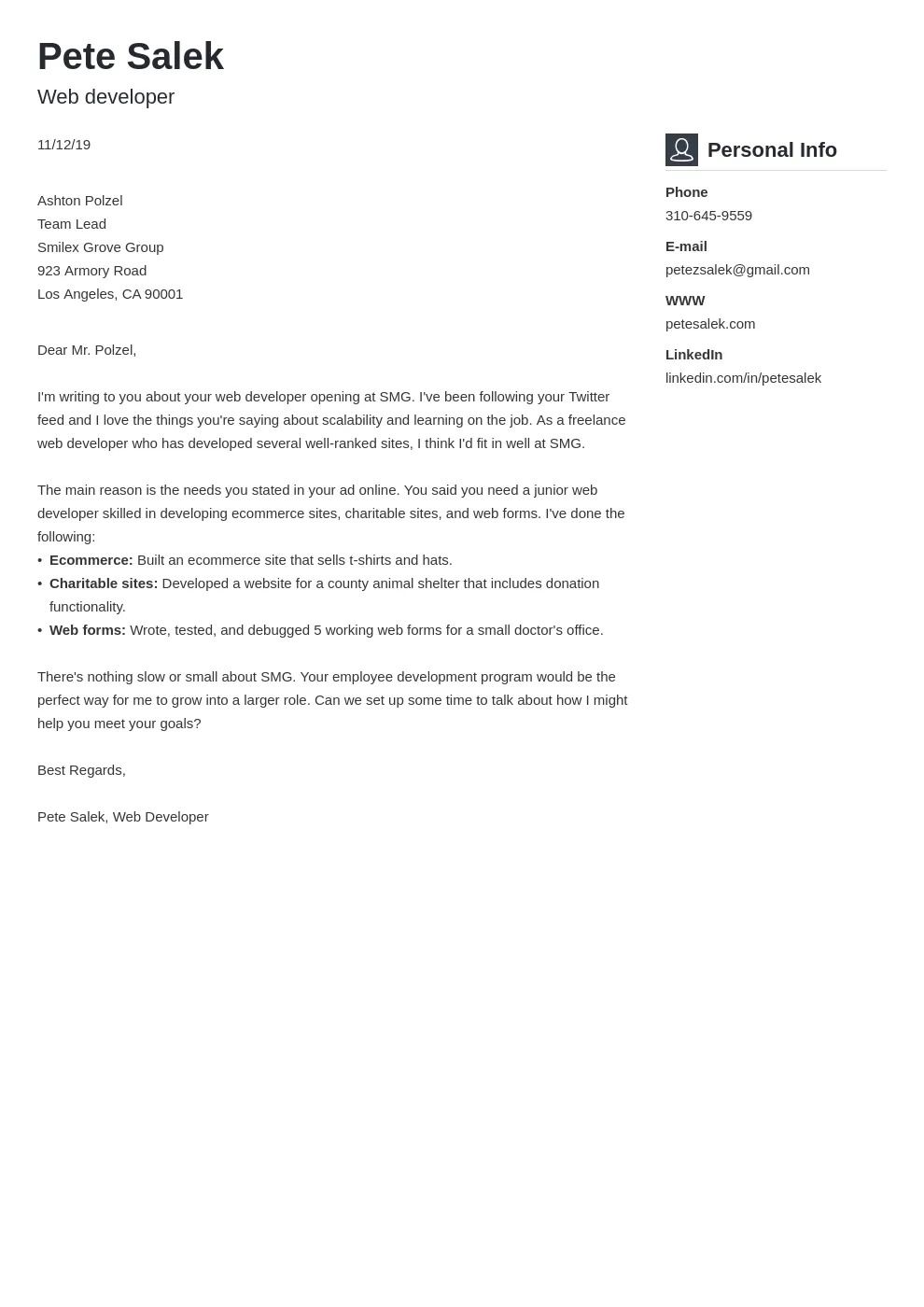
Web development often involves working collaboratively. Highlight your ability to communicate technical information clearly, both verbally and in writing. Describe your experience working in agile teams, participating in code reviews, and collaborating with designers and other developers. Mention any tools or methods you use for effective communication and teamwork, like Slack, Jira, or daily stand-ups.
Problem-Solving Abilities
Web developers must be adept at solving problems. Provide examples of how you’ve tackled technical challenges. Describe the strategies you use to troubleshoot issues, debug code, and optimize performance. Highlight your analytical skills and your ability to find creative solutions to complex problems. Discuss any methodologies you use to manage problems.
Tailoring Your Cover Letter
Generic cover letters are easily spotted and often discarded. Tailoring your cover letter to each specific job application is essential to show genuine interest and suitability. This involves researching the company, understanding its needs, and aligning your skills and experience with the job description.
Researching the Company
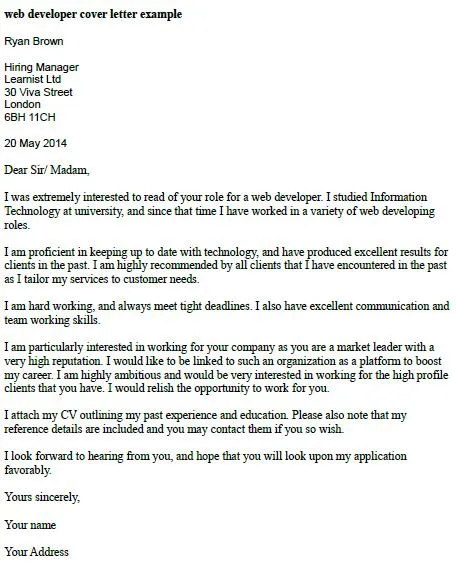
Before you start writing, research the company thoroughly. Understand their products, services, culture, and values. Visit their website, read their blog, and check their social media presence. This information will help you tailor your cover letter to resonate with the company’s specific needs and demonstrate your genuine interest in working for them. Knowing about the company will also help tailor your cover letter for maximum impact.
Matching Skills to Job Requirements
Carefully analyze the job description and identify the key requirements and responsibilities. Highlight the skills and experiences that directly match these requirements. Use keywords from the job description to make your cover letter more relevant. Show how your skills and experience align with the company’s needs, using specific examples to illustrate your points. It will make it clear that you fit in the role.
Showcasing Your Portfolio
A web developer’s portfolio is a crucial part of the application process. Your portfolio should be easily accessible and showcase your best work. Include a diverse range of projects that demonstrate your skills and experience, making it easier for the company to see your potential.
Providing a Link to Your Portfolio
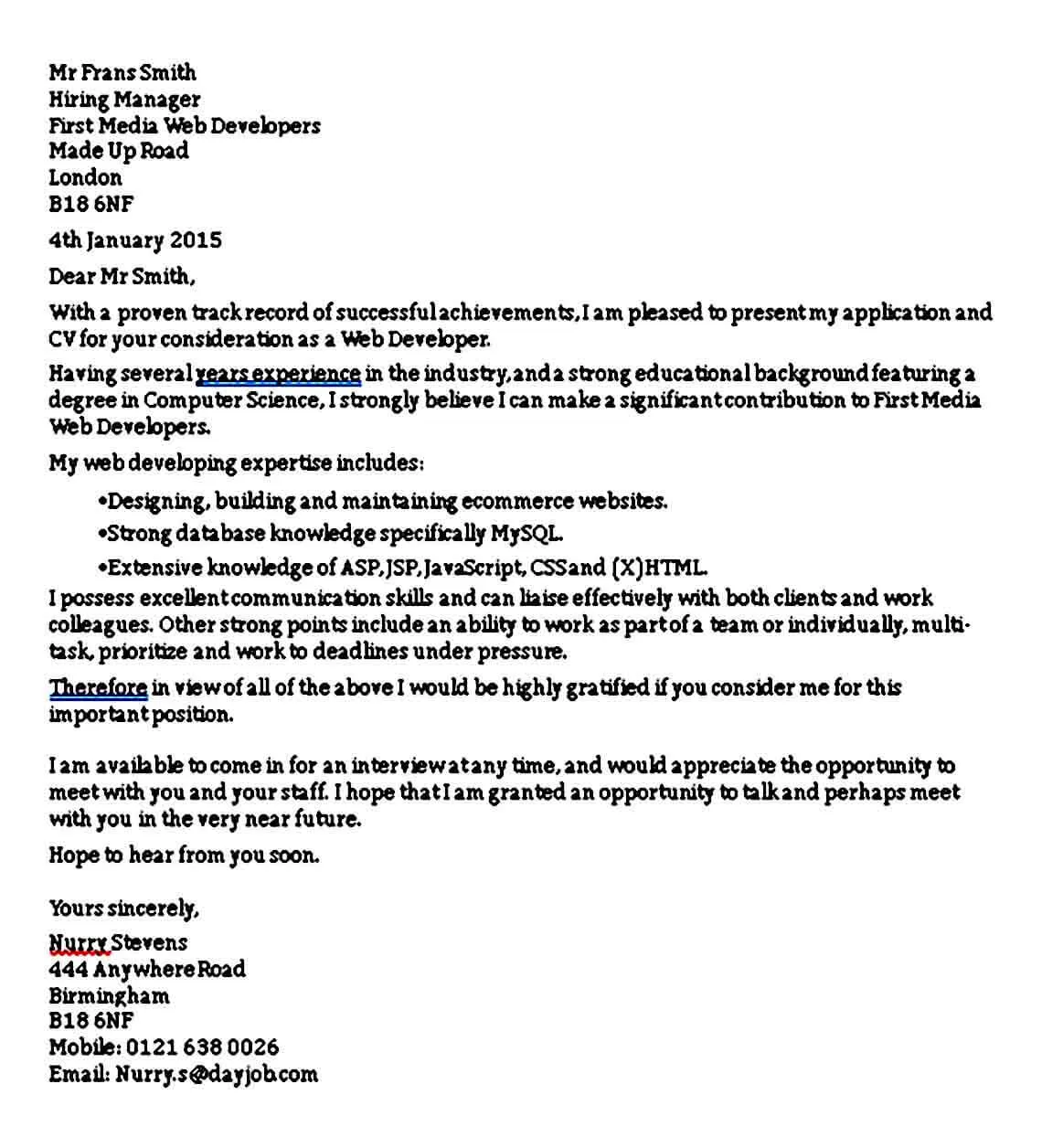
Always include a link to your portfolio in your cover letter. Make it easy for the hiring manager to access your work. Ensure your portfolio is well-designed, easy to navigate, and mobile-friendly. Also, make sure it is updated and contains your most relevant projects.
Describing Relevant Projects
Briefly describe the projects in your portfolio and highlight your role in each. Mention the technologies you used and the challenges you overcame. Quantify your achievements whenever possible. Focus on the projects most relevant to the job requirements. Briefly explain the project’s purpose, your responsibilities, and the outcomes you achieved. This gives the hiring manager a quick overview of your capabilities.
Writing a Strong Opening
The opening of your cover letter is critical; it sets the tone and determines whether the hiring manager will continue reading. A strong opening immediately grabs the reader’s attention and makes them want to learn more about you. The opening paragraph needs to be engaging and make the reader interested in you.
Grabbing the Reader’s Attention
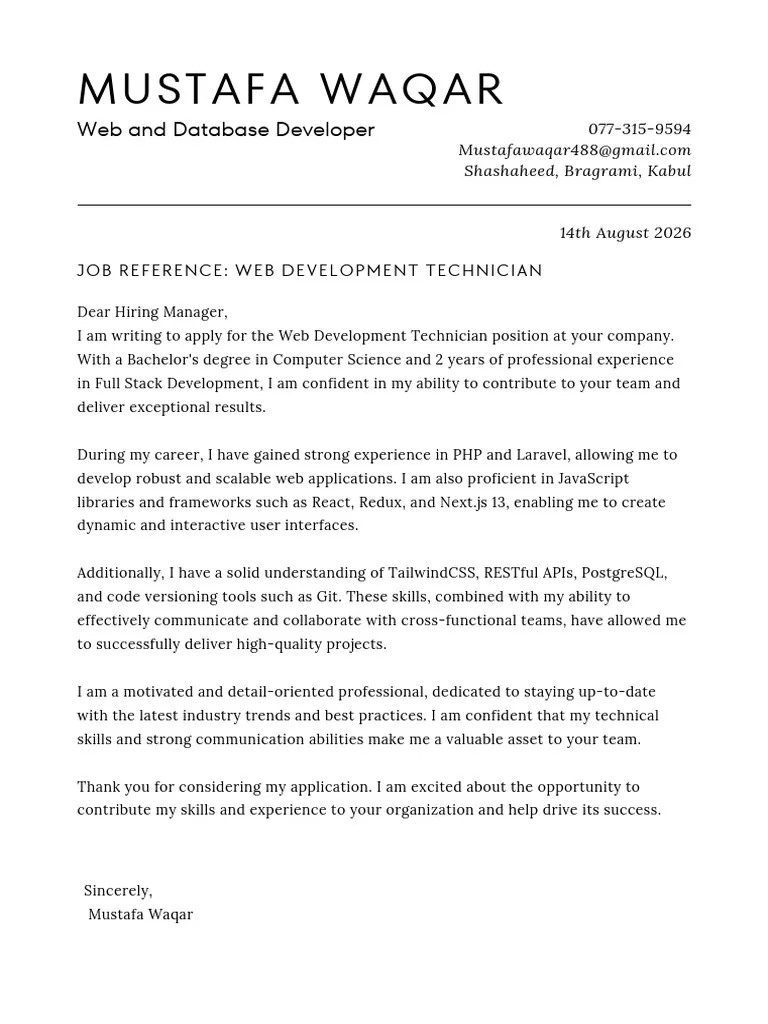
Start with a compelling statement that reflects your enthusiasm for the role or the company. You can mention a specific project you admire or a particular aspect of the company that interests you. Consider a brief anecdote that showcases your skills or passion for web development. This will make your opening more memorable and less generic.
Stating Your Interest Clearly
Immediately state the position you are applying for. Mention where you found the job posting and why you are interested in the role and the company. Be direct and to the point, but also convey your enthusiasm and explain how your skills and experience align with the job requirements. Briefly mention why you are the ideal candidate, setting the stage for the body of your letter.
Structuring the Body of Your Letter
The body of your cover letter is where you elaborate on your skills, experience, and accomplishments. It should be structured in a way that’s easy to read and highlights the most relevant information. Use clear and concise language, and break up your content into paragraphs and bullet points to improve readability.
Highlighting Accomplishments
Instead of just listing your responsibilities, focus on your accomplishments. Provide specific examples of how you’ve contributed to previous projects or roles. Mention any projects you spearheaded and the results you achieved. Use the STAR method (Situation, Task, Action, Result) to describe your experiences in a structured manner. This will help you explain your achievements clearly and effectively.
Quantifying Your Achievements
Whenever possible, quantify your achievements. Use numbers and data to demonstrate the impact of your work. For example, instead of saying, “Improved website performance,” say, “Improved website loading time by 30%, resulting in a 15% increase in user engagement.” Quantifying your achievements makes them more impactful and shows your ability to deliver results. Numbers add a great deal of value to your cover letter.
Closing Your Cover Letter Effectively
The closing of your cover letter should leave a positive impression and encourage the hiring manager to take the next step. It’s your final opportunity to reiterate your interest and express your enthusiasm for the role.
Expressing Enthusiasm
Reiterate your enthusiasm for the position and the company. Briefly summarize why you believe you are a good fit for the role. Express your excitement about the opportunity to contribute to the team and the company’s success. End on a positive note, reinforcing your interest and eagerness to learn more.
Including a Call to Action
Include a clear call to action. Let the hiring manager know you are available for an interview and eager to discuss your qualifications further. Thank the hiring manager for their time and consideration. Provide your contact information and any other relevant details to facilitate the next steps in the hiring process. Make it easy for them to contact you.
